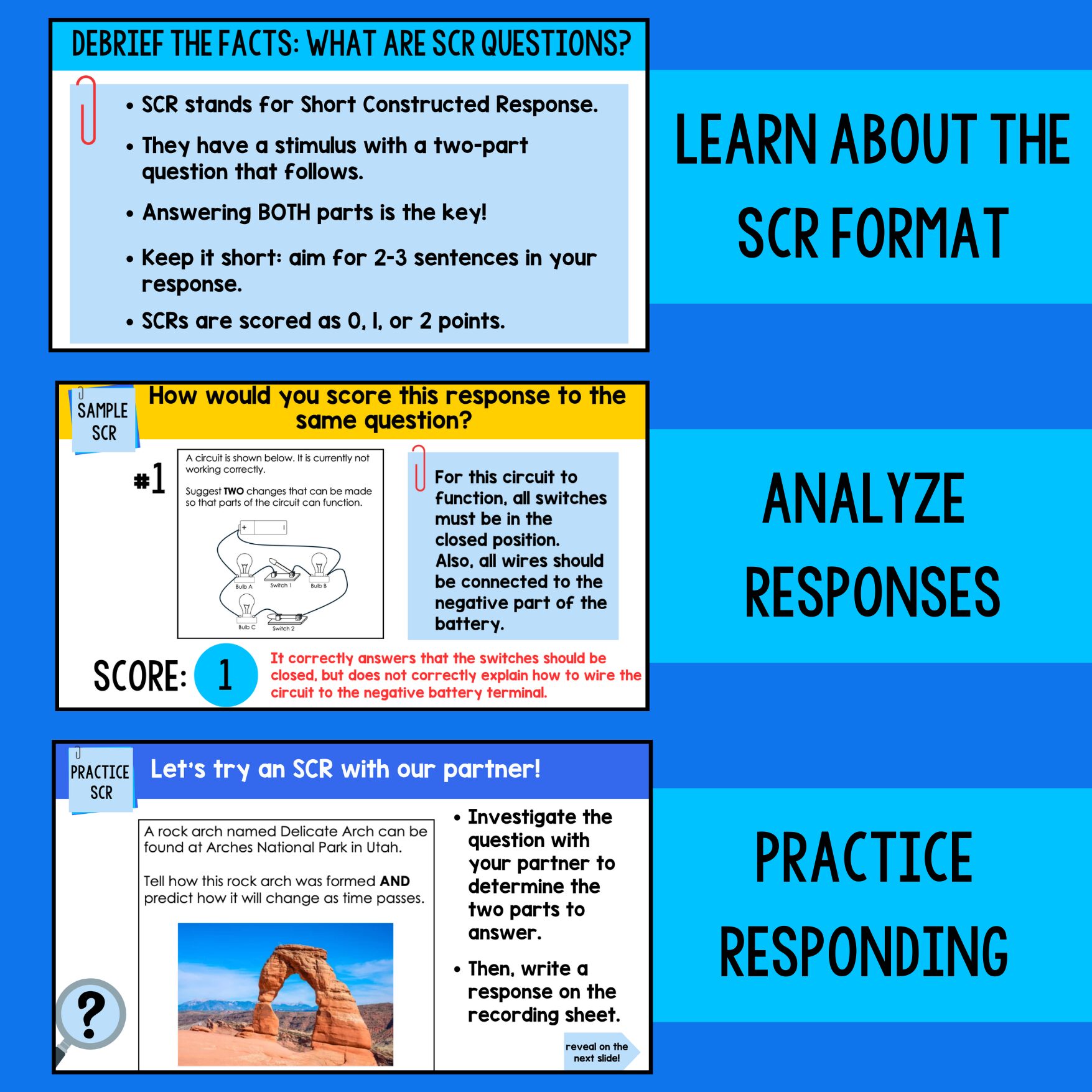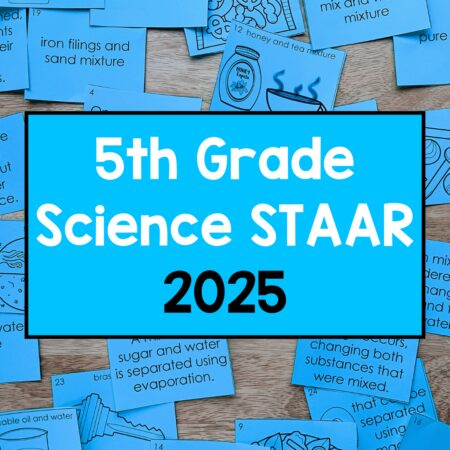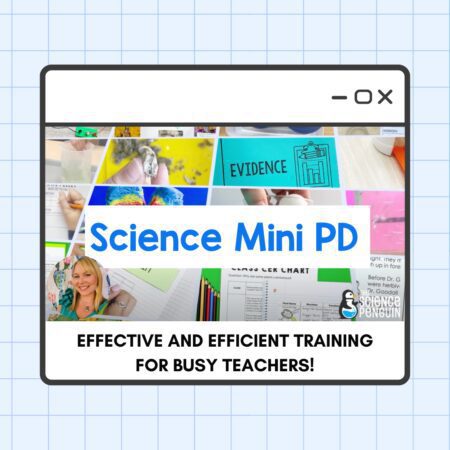STAAR testing…the phrase that makes most teachers groan, right? We’ve all got opinions on standardized testing, but the reality is that we need to prepare our students for what they will encounter on 5th Grade Science STAAR, including Short Constructed Response (SCR).
With new STAAR item types like Multiselect, Hot Spot, Drag and Drop, Multipart, and Short Constructed Response, science students need to be exposed to more than just the typical 4-choice questions. The SCR is an item type that needs careful consideration throughout the year.
What is Short Constructed Response?
Below is an example of an SCR question from The Science Penguin. It includes:
- the stimulus (information provided)
- two questions that must be answered
As a longtime Texas 5th-grade science teacher, I was initially most concerned about Short Constructed Response questions when first introduced to the new STAAR item types.
How would I prepare my students for this, especially those who didn’t like writing more than one-word answers? I knew I had to learn more about what it entailed. Here are the basic facts about what is expected on the SCR for 5th graders in Texas for 5th grade science:
- This is NOT an essay response. In fact, it must be no more than 475 characters. That means each student is expected to write less than about a paragraph’s worth of information.
- This type of question is worth 2 points. Students can earn partial credit for answering part of the question correctly.
- Based on the samples shown by TEA, SCR questions seem to have two “parts” that need answering.
- Based on the samples shown by TEA, SCR questions seem to have a stimulus that gives information about a scenario. This could be a chart or picture. It does not appear to be a question without context.
- The SCR is graded by a human grader using a rubric.

Now, what can you do to prepare for the SCR? Here are 3 tips to put to use in your classroom!
1. Implement SCR practice into your weekly routine.
I would usually do this the day before a test. Once students knew the topic well, I’d do a practice SCR with them. I would go over the question, make sure students understood what it was asking, and they would write responses.
By seeing SCRs with multiple topics, it wasn’t a scary concept and they got used to the routine. By May, they felt confident!
2. Have your students rate responses.
Practice scoring a few samples with them, showing an example of a 0, 1, and 2 (I usually wrote one of each to make sure they’d see the difference). After writing their answers on sticky notes, I would mix the sticky notes up and pass them back out randomly.
Then, I’d let them grade the anonymous sticky note as a 0, 1 or 2. I made a chart on the board with spaces for 0, 1, and 2, and had students come put the sticky note with the answer they graded in the correct space. After, we’d take a look at patterns seen for each score, what made them great, and how they could be improved.
These were not “officially” graded, since many students didn’t put names on them if they wanted them to be anonymous. Giving them the option to keep it anonymous allowed them to make mistakes and learn from them without embarrassment. When I wanted a “graded” SCR practice, I made sure that I was the one doing the grading 🙂
3. Remind your students that more is not always better.
After looking at the TEA SCR Scoring Guide here and the SCR Rationale of #15 here, it’s clear that students don’t need to write a long-winded response.
In fact, keeping it simple and sticking to the questions asked seems to be the best bet. Remember, the question is usually asking two things.
Here’s my big fancy “strategy”: I taught students to write one sentence to address each part of the answer.
That’s it, seriously. Answering the two things the question asks will ensure that students stay on topic and don’t risk giving too much irrelevant information.
In the Scoring Guide, we see that going off-topic can cause students to lose points if incorrect information is written, so don’t risk it! I had to remind students that this is not a time to show off all your science knowledge: you can’t get extra credit, so stick to the things they are specifically asking.
SCR Detectives Lessons
This resource provides step-by-step lessons designed to help students answer Short Constructed Response questions.
SCR Detectives is a three-day Google Slides-based lesson with a detective theme. It includes six new SCR items that students will investigate, analyze, respond to, and score.
Each day, students will:
- Learn how SCRS are formatted and scored
- Analyze a sample SCR and determine how to respond
- Create a response and evaluate it using a rubric
- Evaluate other responses using a rubric
- Practice answering and evaluating a second SCR
Each day is scaffolded to gradually release responsibility. A teacher guide is included with instructions for each day. Student recording sheets are provided for Days 2 and 3.

See it on TPT: SCR Detectives
See the STAAR bundle: Science STAAR Bundle
Full year bundle users: Find it with the STAAR prep in your 5th Grade Science TEKS Bundle
Short Constructed Response Practice
See, it’s not that scary! So, how do you get started on this in the classroom? Well, The Science Penguin has already created 30 practice Short Constructed Responses to use with students!
They are in Google Forms format, which makes this super easy to implement with Google Classroom, Schoology, Canva, etc.
Includes:
- 30 separate Google Forms with a TEKS-aligned SCR question
- Scoring Guide to determine the number of points to award for each question
If you want to use these SCRs in a similar fashion to the “peer grading sticky note method” I wrote about above, just project the question and have them use sticky notes.
I would usually have them write their sticky note answer AND type the same answer into the Google Form and submit- so we got to do the peer grading activity, and I would also get each student’s answer via Google Forms. Win-win!
See it on TPT: Science STAAR SCR Practice
See the STAAR bundle: Science STAAR Bundle
Full year bundle users: Find it with the STAAR prep in your 5th Grade Science TEKS Bundle
Hopefully, you can utilize this information in your classroom to help students become more confident about the SCR item types on this year’s STAAR test!
-Holly, Science Penguin Curriculum Support Specialist











